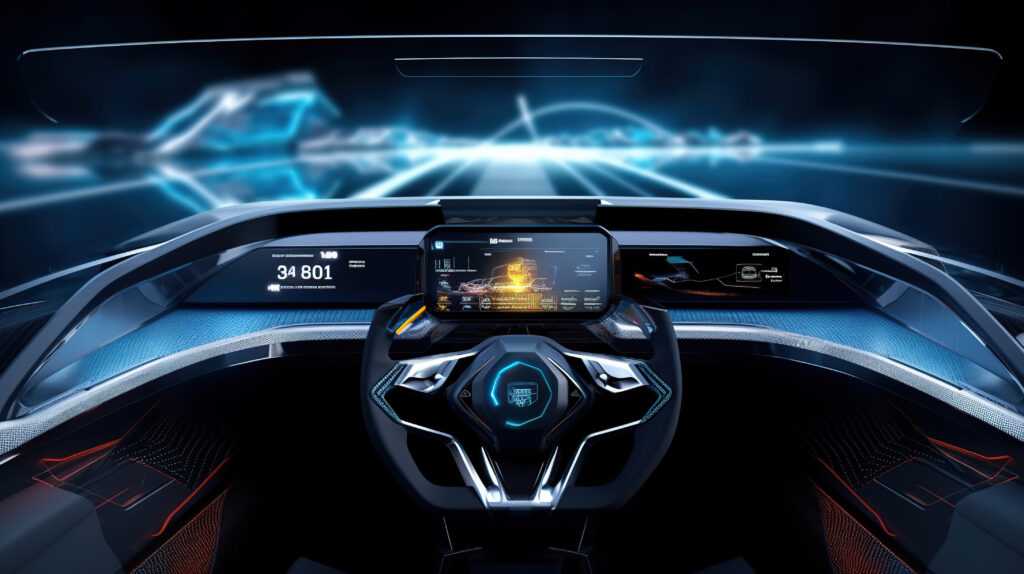The Electric Revolution: Transforming Automotive Electronics
Revolutionizing Automotive Technology: The Impact of Vehicle Electrification The automotive industry is undergoing a revolutionary transformation with the electrification of vehicles. This shift towards electric power trains is not only changing the way cars are propelled but also significantly impacting the landscape of automotive electronics. As we move away from internal combustion engines (ICEs) […]

Revolutionizing Automotive Technology: The Impact of Vehicle Electrification
The automotive industry is undergoing a revolutionary transformation with the electrification of vehicles. This shift towards electric power trains is not only changing the way cars are propelled but also significantly impacting the landscape of automotive electronics.

As we move away from internal combustion engines (ICEs) towards electric vehicles (EVs), the demand for sophisticated electronic systems is skyrocketing, reshaping the entire automotive supply chain and driving innovation in ways never seen before.
The Rise of Electric Vehicles

The transition to electric vehicles is gaining momentum globally, driven by environmental concerns, government regulations, and advancements in battery technology.
This shift is causing a fundamental change in the architecture of vehicles, with the traditional mechanical systems being replaced or augmented by electrical and electronic components.
Impact on Automotive Electronics
- Battery Management Systems (BMS)
At the heart of every electric vehicle lies its battery pack, and managing this power source efficiently is crucial for performance, safety, and longevity. Battery Management Systems (BMS) have become a critical component in EVs, monitoring and controlling various aspects of the battery:
- Cell balancing
- State of charge (SoC) estimation
- Temperature monitoring
- Fault detection and protection
- The complexity of BMS has increased dramatically, requiring advanced algorithms and robust hardware to ensure optimal battery performance and safety.
- Power Electronics
Power electronics play a pivotal role in electric vehicles, managing the flow of electrical energy between the battery, electric motors, and various vehicle systems. Key components include:
- Inverters: Converting DC power from the battery to AC for the electric motors
- DC-DC converters: Stepping down high-voltage battery power for low-voltage vehicle systems
- On-board chargers: Managing the charging process from external power sources.
- The development of more efficient and compact power electronics is crucial for improving overall vehicle performance and range.
- Electric Drive trains
The electrification of drive trains has led to the development of advanced motor control systems. These systems require sophisticated power electronics and control algorithms to manage:
- Torque delivery
- Regenerative braking
- Traction control
- Energy efficiency optimization
- Charging Infrastructure
The growth of EVs is closely tied to the development of charging infrastructure. This has spurred innovation in charging technologies, including:
- Fast charging systems
- Wireless charging
- Vehicle-to-grid (V2G) technologies
- These advancements require complex electronic systems both in the vehicle and in the charging stations, creating new opportunities and challenges for automotive electronics manufacturers.
- Thermal Management
Electric vehicles generate significant heat, particularly in the battery pack and power electronics. Effective thermal management is crucial for:
- Maintaining battery performance and longevity
- Ensuring the reliability of power electronics
- Optimizing vehicle range
Advanced electronic control systems are required to manage cooling systems, monitor temperatures, and adjust performance parameters to prevent overheating.
- Autonomous Driving and ADAS
- While not exclusive to electric vehicles, the trend towards autonomous driving and advanced driver assistance systems (ADAS) is accelerating alongside vehicle electrification. This convergence is driving demand for:
- High-performance computing platforms
- Advanced sensors (cameras, LiDAR, radar)
- AI and machine learning capabilities
The integration of these systems with the electric powertrain creates new challenges and opportunities for automotive electronics designers.
Connectivity and Infotainment
Electric vehicles are often at the forefront of connectivity and infotainment technologies. This includes:
- Over-the-air (OTA) updates for vehicle systems
- Advanced human-machine interfaces (HMI)
- Integration with smartphones and smart home devices
- Real-time energy management and route planning
These features require sophisticated electronic systems and software, further increasing the complexity of automotive electronics.
Cybersecurity
As vehicles become more connected and reliant on electronic systems, cybersecurity has become a critical concern. Protecting EVs from potential cyber threats requires:
- Secure communication protocols
- Encrypted data storage
- Intrusion detection systems
- Regular security updates
The need for robust cybersecurity measures is driving innovation in automotive electronics and software development.
- Sensor Integration
Electric vehicles rely heavily on a wide array of sensors to monitor various systems and provide data for optimal performance. This includes:
- Current and voltage sensors for the battery and power electronics
- Temperature sensors throughout the vehicle
- Occupancy and weight sensors for safety systems
- Environmental sensors for ADAS and autonomous driving
- The integration and processing of data from these sensors require advanced electronic control units (ECUs) and communication networks.
- Vehicle Diagnostics and Prognostics
- The complex nature of electric vehicles necessitates advanced diagnostic and prognostic systems. These systems monitor the health of various components and predict potential issues before they occur, enabling:
- Predictive maintenance
- Improved reliability
- Optimized service scheduling
- This requires sophisticated on-board diagnostics (OBD) systems and data analytics capabilities.
Challenges and Opportunities
The electrification of vehicles presents both challenges and opportunities for the automotive electronics industry:
Challenges:
- Rapid technological evolution requiring constant innovation
- Increased system complexity and integration
- Stringent safety and reliability requirements
- Cost pressures to make EVs more affordable
Opportunities:
- Growing market for automotive electronics
- Development of new technologies and intellectual property
- Expansion into new areas such as charging infrastructure
- Collaboration between automotive and technology sectors
- The electrification of vehicles is profoundly impacting the automotive electronics landscape. From battery management systems to advanced driver assistance technologies, the demand for sophisticated electronic components and systems is growing exponentially.
This transformation is driving innovation, creating new market opportunities, and reshaping the automotive supply chain.
As the industry continues to evolve, collaboration between traditional automotive manufacturers, technology companies, and electronics suppliers will be crucial.
The future of automotive electronics in the age of electrification is bright, with endless possibilities for innovation and growth. Companies that can navigate this changing landscape, addressing the challenges while capitalizing on the opportunities, will be well-positioned to lead in the electric vehicle era.


